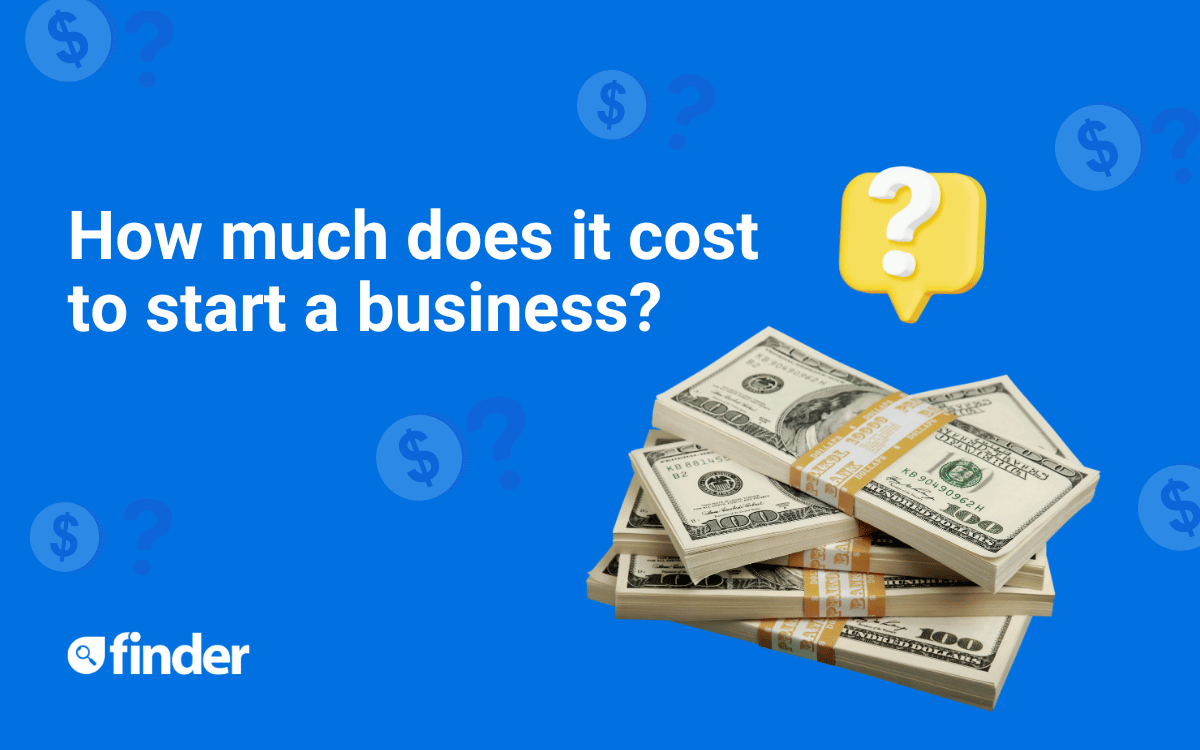Starting a business feels equal parts thrilling and terrifying. The “how much will it cost?” question is one of the first—and smartest—questions an entrepreneur asks. The honest answer: it depends. But you don’t have to guess. This long-form guide breaks down real-world cost ranges, the line-item expenses you must budget for, research-backed facts about capital and survival, and practical, actionable steps so you can plan with confidence. Read on for clear numbers, an easy calculator-style table, SEO-friendly keywords you can use on your blog, and a short FAQ to answer the questions people actually type into search engines.
Quick headline numbers (what most sources report)
- Typical first-year cost for many small businesses: ~$30,000–$40,000 (averages vary by study and industry). kauffman.org+1
- LLC formation (state filing) fees: $35 – $500 depending on state; national average roughly $120–$132. Investopedia+1
- Micro / home-based startups: can launch for under $3,000; brick-and-mortar stores and restaurants commonly require $50,000 to $300,000+. Small Business Administration+1
- Recommended cash runway before launch: many experts suggest 6 months of operating expenses on hand. Indinero
Why you’ll see wildly different numbers
Startup costs vary because businesses are not the same. A freelance writer can launch with a laptop and a few hundred dollars; a coffee shop needs lease deposits, equipment, renovations, staff, and inventory. Industry, geography (big city vs. rural), whether you lease or buy, and how many employees you plan to hire drive most of the variance. Also—what counts as “startup cost” differs between studies (some include the first year of payroll; others count only one-time formation fees). See the SBA’s calculator to create your own list. Small Business Administration
Table: Typical cost ranges by business type (one-time & initial first-year)
| Business type | Typical one-time startup costs | Typical first-year total (est.) |
|---|---|---|
| Home-based service (consulting, freelancing) | $200–$3,000 (website, tools, licenses) | $1,000–$10,000 |
| Online store / e-commerce | $1,000–$20,000 (inventory, site, photography) | $5,000–$60,000 |
| Food truck | $20,000–$100,000 (truck, equipment, permits) | $40,000–$150,000 |
| Retail storefront | $10,000–$250,000 (lease improvements, inventory) | $50,000–$300,000+ |
| Restaurant / cafe | $50,000–$500,000 (kitchen, H.V.A.C., equipment) | $100,000–$500,000+ |
| Tech startup (MVP + small team) | $10,000–$300,000 (dev, infrastructure) | $35,000–$250,000+ |
| Franchise (fast food, retail) | $20,000–$2M (franchise fee + buildout) | Varies widely, often $100,000+ |
(Ranges are conservative aggregates from multiple industry sources and expert guides; your number may be lower or higher depending on choices). Shopify+1
Line-by-line: The most common startup cost categories (and realistic numbers)
Use this checklist to build your own budget. I list typical low–mid–high ranges so you can see realistic planning scenarios.
- Business formation & legal
- State filing (LLC/corp): $35–$500 (average ≈ $120). Investopedia
- Employer Identification Number (EIN): free from IRS.
- Registered agent service (optional): $50–$300/year.
- Legal help (contracts, IP): $0–$5,000+ depending on complexity.
- Licenses & permits
- Local permits, professional licenses, health inspections: $0–$2,000+ depending on industry and municipality (restaurants higher).
- Insurance
- General liability, property, workers’ comp: $300–$5,000+/yr.
- Office / retail space
- Security deposit + first month: 1–3 months’ rent (varies by location).
- Build-out / renovations: $1,000–$200,000+.
- Equipment & inventory
- Laptop + software for a freelancer: $1,000–$5,000.
- Restaurant equipment: $20,000–$200,000+.
- Website & technology
- Basic site + domain: $100–$2,000.
- E-commerce + inventory management: $500–$20,000.
- SaaS subscriptions (monthly): $20–$1,000+/mo.
- Marketing & branding
- Logo, photography, launch ads: $200–$20,000.
- Ongoing customer acquisition: variable—plan at least $200–$2,000/mo for paid ads if you rely on them.
- Payroll & contractors
- Even a solo owner should budget for at least 3–6 months of salary replacement or contractor costs if they won’t be paid at first.
- Working capital
- Cash to cover inventory replenishment, bills, and seasonality: aim for 3–6 months of operating expenses.
- Professional services & compliance
- Accountant/bookkeeper, software: $500–$5,000+ annually.
How to estimate YOUR startup cost (step-by-step)
- Define scope: product/service, delivery channel (online vs. physical), geography, and whether you’ll hire staff.
- List one-time vs. recurring: classify every line item. One-time: equipment, build-out. Recurring: rent, SaaS, salaries.
- Get quotes: call 3 contractors, request lease terms, price equipment. Real quotes beat guesses.
- Build a 12-month cash flow: list inflows (realistic sales projections) and outflows (expenses).
- What’s your runway? Multiply your monthly net burn by the months of runway you want (6 months is conservative). Many advisors recommend 6 months to 12 months. Indinero
Where entrepreneurs actually get money (funding options)
- Personal savings / friends & family — most common early source. Kauffman research shows many founder households use personal funds. kauffman.org
- Small business loans (SBA 7(a), microloans) — banks and nonprofit lenders. SBA has helpful planning tools. Small Business Administration
- Business credit cards — easy but risky if you carry high interest.
- Angel investors / venture capital — mostly for high-growth tech startups.
- Grants and local programs — look for state/local small business programs (sometimes targeted at minority, veteran, or women-owned businesses).
- Crowdfunding — reward-based or equity crowdfunding for product businesses.
Evidence & research you can rely on (scientific / policy sources)
- Ewing Marion Kauffman Foundation: long-standing research estimates average startup expense levels and emphasizes that access to capital materially affects survival—founders with more capital face lower failure odds. This is often cited as a baseline average (~$30k in older surveys). kauffman.org+1
- U.S. Small Business Administration (SBA): practical worksheets and official guidance to calculate startup costs and prepare loan packages—essential for realistic planning and lender conversations. Small Business Administration
- Recent industry surveys (Bankrate / Shopify / Bank & trade media): consistently report average first-year spending in the $30k–$40k range for businesses that plan to hire or maintain inventory—again, with wide dispersion by industry. Bankrate+1
- Federal reports / news: recent Treasury and industry analyses show a surge in startup applications and confirm the typical first-year cost benchmarks used by policymakers. These findings help explain why some lawmakers suggest higher allowances for startup deductions or support programs. Reuters
Smart ways to lower startup costs (practical and proven)
- Start lean / MVP: launch a minimum viable product and validate demand before big inventory or build-out.
- Use low-cost marketing: organic social, partnerships, and content (start an SEO blog—see keywords below).
- Buy used equipment or lease; negotiate leasehold improvements with landlords.
- Outsource vs hire: use contractors until you need full-time staff.
- Apply for local grants and microloans specifically for new small businesses.
- Take advantage of tax rules: IRS allows startup cost deductions—talk with an accountant to time expenses for tax benefit. Indinero
A compact startup budget template (quick math)
- Sum of one-time costs = A
- Monthly recurring costs = B
- Months of runway desired = M (recommended 6)
- Total capital needed = A + (B × M)
Example: one-time $8,000 + monthly $4,000 × 6 months = $8,000 + $24,000 = $32,000 total capital required.
Common hidden costs new founders forget
- Merchant processing fees (card fees)
- Local business license renewals or inspections that charge annually
- Sales tax collection and software costs
- Payment for background checks / certifications for regulated work
- Uninsured downtime or repairs for equipment
- Higher-than-expected marketing CAC (cost to acquire customers) during initial growth phase
Real-world examples (ballpark scenarios)
- Freelancer / solopreneur: buy laptop and software, form a business (optional), basic website = $500–$3,000.
- Small cafe in mid-sized city: deposits, kitchen equipment, initial staff, licenses = $150k–$400k.
- E-commerce brand: inventory, photography, marketing launch = $5k–$60k depending on product sourcing.
(These are illustrative; ask for a free tailored estimate if you want a line-by-line budget for your idea.)
FAQs (people also ask)
Q: Is it cheaper to form a sole proprietorship than an LLC?
A: Often yes—sole proprietorships can be started with almost no state filing fee, but they don’t provide liability protection. LLCs typically cost between $35 and $500 for state filing, plus possible annual reports. Factor in the value of liability protection when deciding. Investopedia
Q: Can I start a business with no money?
A: Some businesses (service-based, freelance) can start with very little capital, but most founders need working capital for at least a few months. Consider bootstrapping, pre-sales, or funding via friends/family as options. Kauffman’s research shows access to capital strongly impacts survival odds. kauffman.org
Q: How much should I budget for marketing in year one?
A: Many small businesses budget 5–20% of projected revenue for marketing. If you’re launching and need traction, plan a higher percentage or a set monthly spend (e.g., $500–$3,000+/mo) depending on channel. Shopify
Q: What paperwork and fees are required to legally form a business?
A: Typical items include state formation (LLC/incorporation) fee, local business licenses, an EIN from the IRS (free), and possibly registered agent fees. Costs vary by state and industry. Use the SBA guide and state websites for official fee schedules. Small Business Administration+1
Q: How much cash runway do I really need?
A: Conservative founders plan for 6–12 months of operating expenses. Some low-burn businesses can manage on 3 months, but more runway reduces risk. Indinero
Want a ready-made budget or a tailored estimate?
If you’d like, I can create a custom 12-month startup budget for your specific business idea (I’ll need: business type, city/state, whether you’ll lease space, expected employees, and whether you’ll hold inventory). I can also convert that into an investor-ready “how much we need and why” one-pager.
Sources & reading (key references used)
-
SBA — Calculate your startup costs (worksheet & guidance). Small Business Administration
-
Bankrate — Average cost to start a small business ~ $40,000 (analysis & data). Bankrate
-
Investopedia / Legal sites — LLC costs and state filing fee ranges. Investopedia+1
-
Ewing Marion Kauffman Foundation — research showing average startup cost benchmarks and relationship between capital and survival. kauffman.org
-
Reuters / U.S. Treasury reporting — recent context on startup application surges and policy responses referencing average startup costs. Reuters



